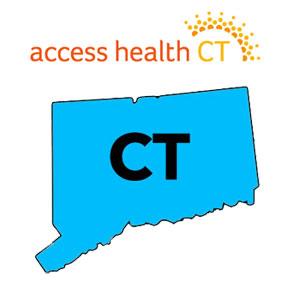Connecticut: @AccessHealthCT announces final 2022 OEP enrollment of 112.6K QHPs, up 7.3% y/y!

I've received a copy of Access Health CT's monthly board meeting slideshow, which includes the final 2022 Open Enrollment Period metrics and other demographic data. Here's some of the key points:
OE Enrollment/Eligibility Activity:
- Started OE 9 with 107,058 enrollees (Up 8%)
- 112,634 enrolled into a qualified health plan (Up 7%)
- 47.5% eligible for APTC (Up 20%), 36.2% eligible for APTC/CSR (Down 6%).
- Enrollees ineligible for financial help down 43%
- 24,773 determined eligible and completed application for Medicaid (Down 27%)
112,634 is the topline number. Last year's final OEP enrollment tally for Connecticut was 104,946 QHP selections, which means they actually ended up 7.3% year over year. FWIW, I think CT's all-time OEP enrollment record was 116,000 back in 2016.
- Average age of enrollees is 44.1 years old (Down .3 Years)
- 53.4% of enrollees are female (Down .1%)
- Average number of covered enrollees per household is 1.9 (Unchanged)
The average U.S. household has around 2.5 people, but the average number of people covered under ACA market policies is always below 2. I'm guessing this is because larger families are more likely to have coverage via an employer, while single people/no kids are more likely to be self-employed.
- 43.9% of enrollees associated with a broker (Down .3%)
- 48% of 2022 enrollees selected a silver plan (Up 1.2%)
- Median monthly gross premium $678 (+$47) / Median monthly net premium $94 (-$48)
- 91.7% retention rate into 2022 policies (Down .1%)
- 16% (18k) of enrollment not eligible for financial help (Down 14%)
- 60% of those have opted out of determining eligibility for financial help
These last two interest me. Thanks to the American Rescue Plan, middle-income enrollees are far more likely to be eligible for financial help, which (for 2022 at least) now tapers off gradually as your income increase rather than cutting off immediately once you hit 400% of the Federal Poverty Level (FPL). The fact that 11,000 enrollees didn't even bother checking to see if they were eligible suggests that those enrollees have incomes way above 400% FPL; they know for certain that they don't qualify (or at least feel confident about it even if some may be wrong).
There are several slides devoted to a study of adverse selection by Wakely (a large actuarial firm) along several different criteria. The one I find most of interest is the on-exchange vs. off-exchange comparison. I won't post all the slides here, but their conclusions were:
Conclusions:
- Higher off exchange risk scores continue to deteriorate
- On exchange enrollees are of higher average age than off exchange plan enrollees in individual market
- Loss Ratios after consideration of risk adjustment transfers indicates that on exchange enrollees are currently not financially disadvantaged.
Recommendations:
- Monitor overall market enrollment, as the off-exchange market continuing to shrink
- Review impact of shifting metal option enrollment
- Review impact of expanded use of exceptional circumstances special enrollment periods, limit use and ensure eligibility validity of QLEs
- Explore mechanisms for stabilizing the individual and small group markets (1332 Waivers)
There's also an important number in the Medicaid section relating to the COVID pandemic and the national Public Health Emergency (PHE) status:
Public Health Emergency Efforts and Impact:
- PHE recently extended by HHS through January 16, 2022. Expected to maintain coverage for current HUSKY members through at least April 30.
- Any further extension is not likely to be announced by U.S. Department of Health & Human Services until we are closer to that date.
- Over 300k with HUSKY coverage extended since start of PHE.
- Verification requirements extensions continue for enrollees for the duration of the PHE.
- Planning and strategy underway for eventual PHE end.
Back in June I looked at total Medicaid enrollment in every state. At the time, Connecticut had around 1.1 million residents enrolled in the program, or roughly 30.5% of the total state population. The bullet above does not mean that all 300,000 would suddenly lose Medicaid eligibility, but it is a reminder that a lot of people nationwide could lose Medicaid eligibility whenever the PHE ends, and every state has to be prepared for that happening.
How to support my healthcare wonkery:
1. Donate via ActBlue or PayPal
2. Subscribe via Substack.
3. Subscribe via Patreon.



